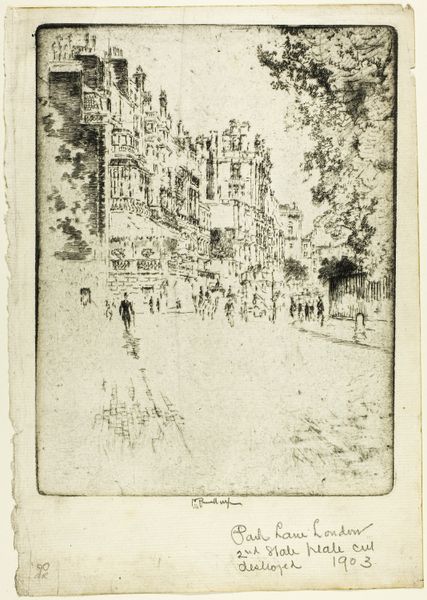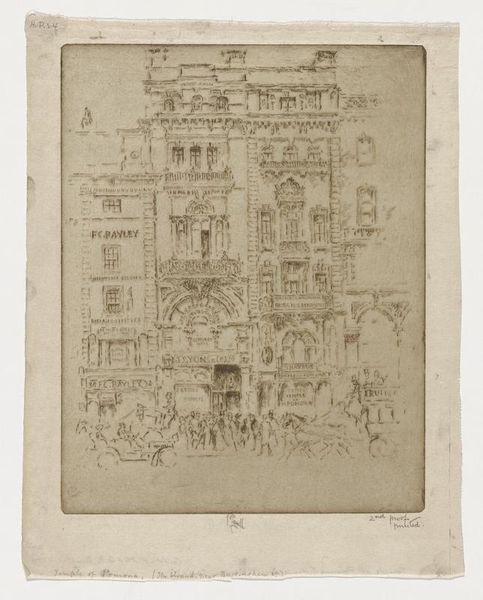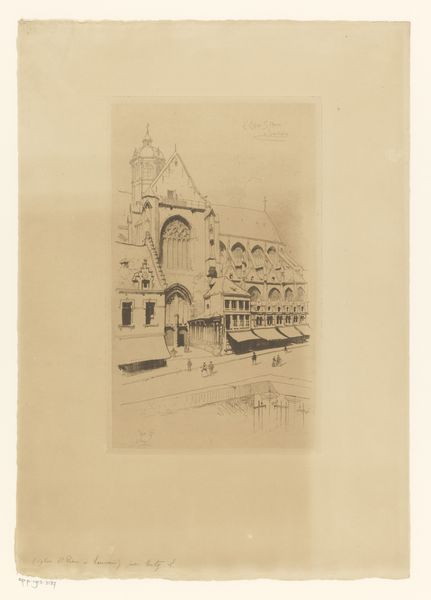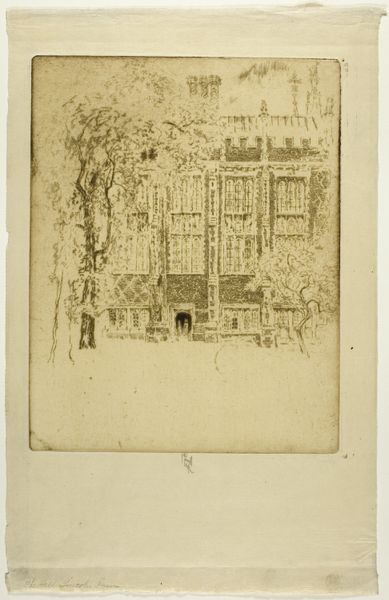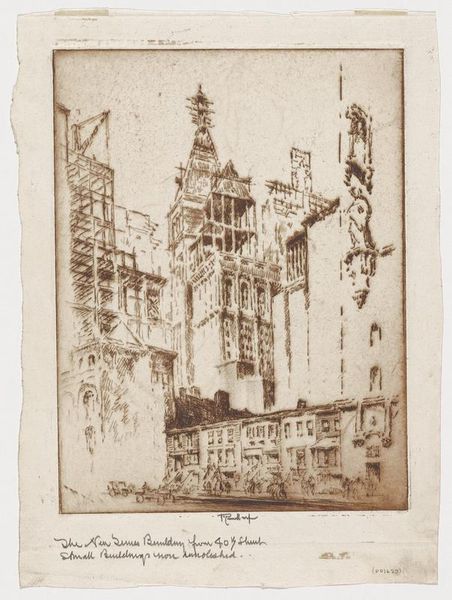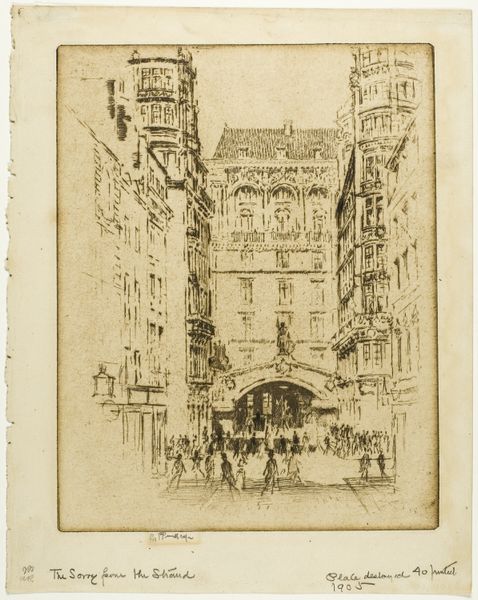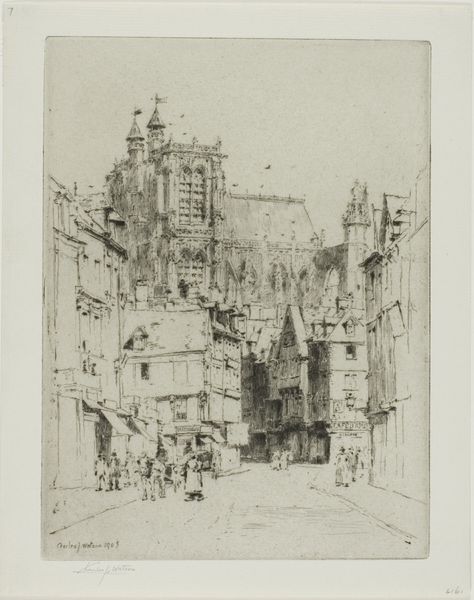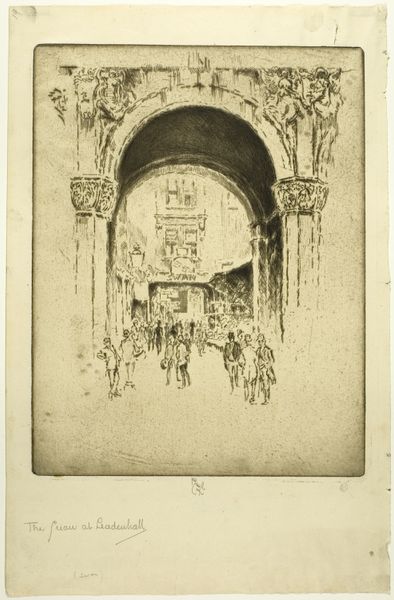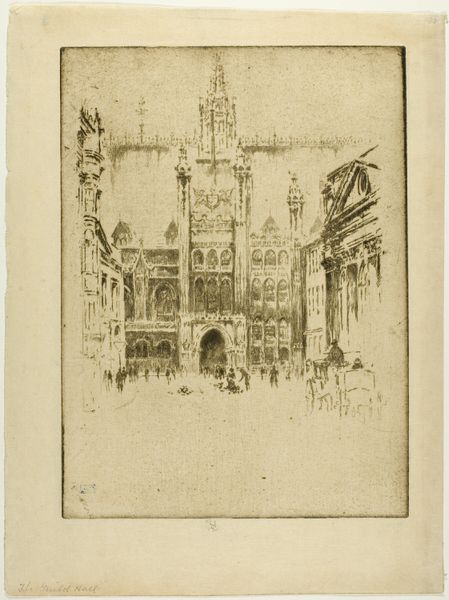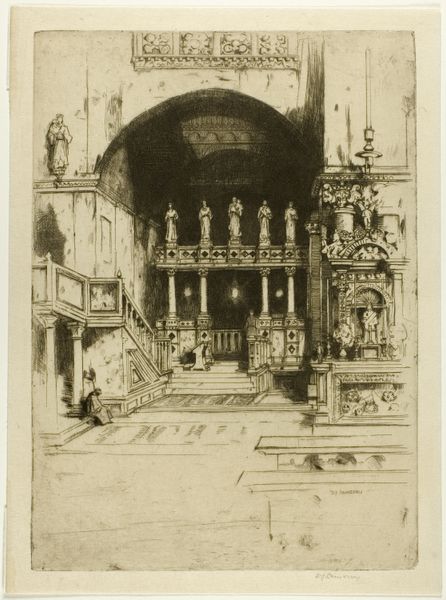
drawing, print, etching, paper, architecture
#
drawing
#
16_19th-century
# print
#
etching
#
etching
#
paper
#
line
#
cityscape
#
architecture
#
realism
Dimensions: 202 × 253 mm (image); 275 × 219mm (sheet)
Copyright: Public Domain
Joseph Pennell created this etching, "The Gate of the Temple", around 1906. The etching process begins with a metal plate, usually copper or zinc. The artist covers the plate with a waxy, acid-resistant ground, then draws an image into the ground with a sharp needle, exposing the metal. The plate is then immersed in acid, which bites into the exposed lines, creating recessed marks. After the ground is removed, ink is applied to the plate, filling the etched lines, and the surface is wiped clean. Finally, damp paper is pressed against the plate, transferring the ink to create the print. Pennell was celebrated for his skill in this labor-intensive process. As an artistic medium, etching allows for the kind of intricate, detailed rendering that you see here. More than that, the graphic quality of the medium seems well-suited to capturing the industrial age. Though the scene is of a grand structure, it is depicted in a manner that suggests its imminent obsolescence. Understanding the material and the making allows us to see how the artist's choices can resonate far beyond the image itself.
Comments
No comments
Be the first to comment and join the conversation on the ultimate creative platform.
